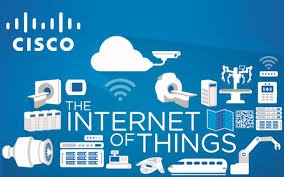Cisco is talking itself up in advance of the first appearance of its new CEO Chuck Robbins in front of the quarterly analyst circus in July. Trading on Wall Street is subdued at the moment with analysts worried that they don’t know how Robbins will perform under real pressure.
When it comes to network hardware, Cisco is, at the moment, the market leader. Its lead in switches stands at 56.8 percent, routing at 47.8 percent, data center network hardware at 46.9 percent, and IP telephony and Wireless LAN at 28.3 percent and 24.7 percent respectively, according to Bloomberg Intelligence.
Are these gnats or baby dragons?
What is troubling about this, however, is that while Cisco is going to be hard to remove, smaller players are chipping away at its market share. The challenge for the new CEO will be defending its position.
The biggest thorn in Cisco’s side is Juniper Networks. Juniper is not a serious threat to Cisco’s dominance, but it does have the ability to steal much-needed revenue.
For example, Cisco’s market share for switches was at 64.5 percent in 2010, and fell to about 57 percent in 2014. Juniper’s has grown from 1.8 percent to 3 percent. In data center networking hardware, Cisco has fallen from 58.7 percent in 2014 to 46.9 percent – Juniper has grown from 2.1 percent to 3 percent.
That seems small, but Juniper is gaining prestigious clients such as Goldman Sachs.
Cisco will further be challenged in Asian markets by its Chinese counterpart Huawei, which has built its share of the routing market 6.9 percent in 2010 to 12.8 percent in 2014, while Cisco’s has fallen from 55.3 percent to 47.8 percent.
However, the move from hardware-centric architecture to application-centric infrastructure is where Cisco’s soft underbelly lies. The argument from the market analysts is that Cisco has the hardware, but its main challenge now is deciding whether it wants to make the big shift to software-defined networks (SDNs) and cannibalize the hardware businesses or use its market position to go all-in on hardware and blunt the growth of SDN. So said a pundit from a money analyst in the USA.
What this misses is that the whole world is going software-defined. As more and more hardware is commoditized its job is taken over by software – including the switches that Cisco is so dominant in.
The SDN market is expected to grow from $3.4 billion in 2014 to $35.6 billion in 2018, according to SDxCentral. This is not a ‘trend’ that Cisco can buck. Cisco currently holds about a 44 percent market share in all data network hardware, which was an $18.4 billion industry in 2014.
Cisco will likely move with the shift, and already has to some extent, but it will have to start moving much faster than it is at the moment to keep pace with SDN. And if it moves too slowly in innovating on this front it is not impossible for the likes of Juniper or Huawei to take over.
The internet of things - opportunity and threat
If this happens, then the loss of market share already underway will be much more pronounced. This is the most immediate danger for Cisco. Cisco also has its eye on the Internet of Things (IoT) trend, namely the growing interconnectivity of everyday devices, with products facilitating communications between these devices. Just how big an impact this will have on Cisco’s revenue is unknown right now.
One of the bellwether signs may be whether Cisco can win any of the business lost to Arista Networks and to the white-box switching equipment market, which proposes to replace proprietary switches, with bare metal devices running open source software.
On Barron’s, Tiernan Ray says some cloud computing operators are seeing limitations with white boxes: “While white box certainly remains a threat to Cisco (and Arista) among these internet content provider (ICP) customers, a number of ICPs are feeling the inherent difficulties associated with adopting the technology. Specifically, white box solutions tend to force the ICP (or any customer) into a “technology integrator” role. Even better, Cisco is having success selling customers on “ACI,” or application-centric infrastructure, its own vision of a programmable network, designed to stave off SDN.
In the last quarter Cisco reported it had 2,650 Nexus 9000 customers and 580 ACI/APIC customers. Cisco claims to be very happy with these results. The ACI/APIC version of the 9000, they claim, is selling ahead of its internal targets
This is a big gamble, particularly If Cisco can’t convince customers on the merits of ACI (and the Cisco ASIC-based architecture in general). The data center switching market could descend into a price-per-port game with white box solutions selling cheaply against Cisco’s with little between them except brand differentiation. It may be a re-run of the famous question Steve Jobs asked of Pepsi executive John Sculley to lure him to Apple: “Do you want to sell sugar water for the rest of your life, or do you want to come with me and change the world?”
It has also been noted that over half of Cisco’s claimed 580 ACI/APIC customers are proof-of-concepts (POCs). That’s a heavy percentage to convert into solid users.
The fact is that there aren’t really many full-blown ACIs out there right now. ACI is helped, the same analyst said, by the fact the alternative, software-defined networking (SDN) is “complex, the standards are still getting solidified, and interoperability between vendor solutions remains tenuous.” However SDN is taking hold, has many practitioners and is gathering market share fast.
Cisco needs to play keep up or SDN needs to die.



